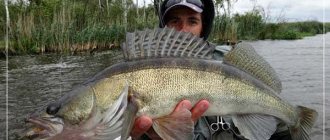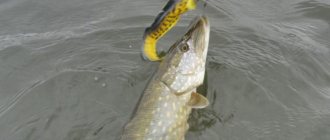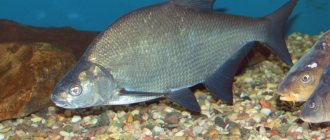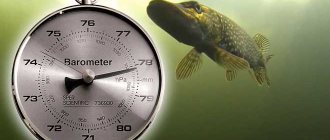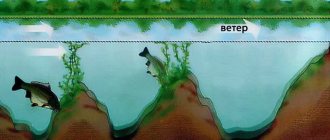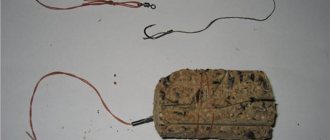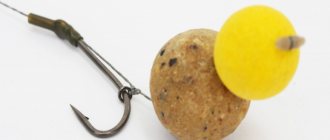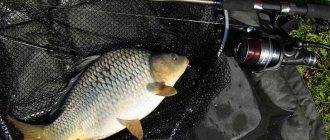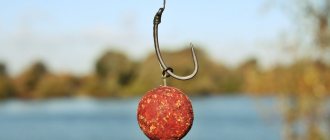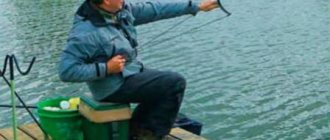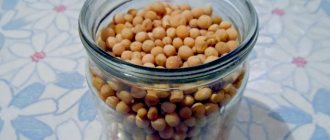Despite the fact that in the fishing world there are conventional divisions into feeders or carp anglers, amateurs or athletes, etc. But carp was, is and will be for centuries the most desirable fish for any person who is not indifferent to fishing. In truth, fighting qualities, serious weight and sometimes simply enormous size attract the mind of any fisherman.
In our previous articles, we wrote about a variety of methods for catching carp, about bait, about finding a suitable place to start fishing, but we have not yet considered the question: how does atmospheric pressure affect fish? What weather factors (depending on the season of the year) have a significant impact on the feeding behavior of carp ?
A more or less knowledgeable person will immediately agree that the bite of this fish is a very unpredictable thing, and very often defies the logic of things. Unfortunately, we humans (unlike fish) do not always fully understand how to determine with maximum accuracy the most important nuances that affect the appetite of carp.
Let's say we have already thoroughly figured out how to properly scout places for carp fishing , how and what to feed it with, and we even know that there is a lot of this fish in a particular body of water. But that's not all! Since there are other equally important “external” factors that seriously affect the intensity of fish biting.
“External” factors influencing carp biting
So what are these factors? For several decades now, experienced world-famous carp anglers have been asking us to take into account: the time of year (divided into 4 seasons, and at least 2 more sub-seasons). Current weather conditions (against the background of a long-term forecast), water temperature, atmospheric pressure, geomagnetic situation and moon phases. And also not just the wind, but its clear direction, strength and temperature.
It’s clear that for an ordinary amateur fisherman all this data is not needed (except perhaps some of it), and for beginners this whole thing is a “dark forest”. And many people plan fishing not for that period - when everything will be “super”, but when the days off from work come. Naturally, we would all like to live near the best pond and go to the fishing site on the most favorable days. But life has other plans, so you have to take up your favorite hobby in your free time. So what should we do?
Summer pressure for carp biting
Summer pressure for carp biting
In hot weather, especially if it is prolonged, almost every fish has low activity. Carp is no exception: it waits out the day at depth, and in the morning, at night, and in the evening it swims to feed. But it is not necessary to hunt for it exclusively on the crown - the approach of a cyclone can change the situation.
Summer thunderstorms are a great time to fish as they bring with them a drop in pressure which causes the carp to become more active. The main thing is that there are no prolonged rains or sudden cold snaps, because a relatively low water temperature can actually reduce the desire of fish to cruise around the water area.
Hence the simple conclusion: in the summer, carp bite well when the pressure drops, and then, pay attention, for some time they consistently take the bait at low pressure. And, as practice shows, the best days for catching it are partly cloudy, but not hot, before or after a thunderstorm, with little wind.
Regional carp fishing forums – tip #1
The ideal option is to definitely find a fishing forum, specifically from your region. Not a single website or even magazines can help you accurately determine and predict the behavior of carp, as the carp fishing forum (including ours (!)). Here, many people describe not only their catches, but also many other nuances. Having carefully “monitored” them, you can already understand that on some days it is worth fishing on a nearby lake, and on others, on the contrary, it is better not to “make unnecessary movements”. Or, nevertheless, do it in order to prove to others your superiority.
The most important wealth of an angler is personal experience!
Of course, valuable advice from scientific ichthyologists or carp fishing experts is very necessary for us, but the most valuable information will be the one that is based on purely personal experience. Correctly recognizing the slightest changes in the behavior of carp, knowing its habits and taste preferences in a specific body of water is only possible when you already have your own “baggage” of knowledge. Well analyzed and sorted out in the mind “on the shelves”.
You can read a lot of articles on different sites about trouble-free carp fishing, but (!) this will not be a panacea, that is, “golden” advice for any situation. Since each region of the country has its own specific nuances that affect the behavior of fish (pressure, wind, weather conditions, terrain and even phases of the moon ). And even between lakes located nearby, there can also be differences. Therefore, your own understanding of all these processes, based on analysis and many years of observation, is what will give an excellent result!
Next, we bring to your attention the main points (basics), based on which you can learn to make your own forecasts for fishing in the future.
Best atmospheric pressure for carp fishing
Let's start with the fact that any changes in atmospheric pressure (as well as its established values) have a significant impact on the behavior of fish (especially on its appetite). Nowadays, you can observe it not only using a home barometer, but also according to data (published daily) on the pages of many meteorological sites.
Although, we cannot find a better, and most importantly, reliable assistant than a home wall barometer (mentioned above). After all, as you know, most forecasts on the Internet are formed “from a flashlight”. So, back to the topic:
- if the pressure drops, then you should expect precipitation, wind or cloudiness,
- if it grows again, the weather will soon be better.
At what pressure does carp bite in summer?
During periods of persistent hot/hot weather, virtually any fish will not be active. That is why, at such periods of time, carps will bite in the morning, late evening or at night. That is, when it's cool. So, using this situation as an example, we can safely say that a decrease in atmospheric pressure “signals” to us that a cold cyclone is approaching, which means that the bite will also change. Naturally, for the better.
According to scientists - ichthyologists, for the carp family the optimal “summer” pressure (i.e., conducive to an active search for food) is either short-term - low, or gradually falling. Combined with clouds and a light breeze. However, it is worth considering that during such periods there may be sharp (!) jumps (usually accompanied by thunderstorms). This means that even within a day, our chances of getting a bite can change several times: from the highest to zero.
Atmospheric pressure and carp fishing
Atmospheric pressure depends on the sun's rays, which heat air masses that acquire the ability to rise or descend relative to the surface of the earth. These masses represent fronts of high and low pressure, and their movement greatly stimulates the generation of wind. In the northern hemisphere, the wind tends to blow towards areas of low pressure.
Let's imagine a typical situation when the bite is bad. The fisherman looks at the barometer needle and exclaims with frustration in his voice: “Well, of course, the pressure has dropped!” As you know, pressure changes just before the weather changes, and not for the better. Later, the air temperature drops, and accordingly, fewer insects circle near the water, and a lot of different changes occur that one way or another affect the bite.
Another typical situation. The weather had not yet changed, but the pressure had already dropped. The fish stop biting and we are again sure that it’s all about pressure. Often we pay attention and blame the pressure precisely when the fish bites poorly, or does not bite at all. But how many times have we paid attention to pressure after successful fishing trips?
Meanwhile, the pressure drops and rises again several times during the day! And, for example, if we have an excellent bite, most anglers don’t even think about looking at the barometer.
In fact, fish are much less susceptible to pressure changes than humans. Let’s say that if we dive to great depths, we can easily become ill, while many fish stay at a certain depth during the day and rise to the top at night. Therefore, atmospheric pressure is nothing more than one of the indicators that can lead us to think about the expected activity of the fish, but cannot in any way be the only true indicator that will dictate the course of fishing.
But to say that atmospheric pressure has no effect on fish at all is also incorrect. Let's figure out how this happens. As the pressure rises, the water level drops quite a bit. This is imperceptible to humans, but fish feel it. The fish becomes not very comfortable at the previously selected depth and moves higher. At this moment, the fish’s sense of touch changes somewhat. The so-called lateral line of fish, which is responsible for seismic orientation, allows you to determine the distance to underwater objects.
When the depth changes, the fish needs some time to come to its senses, get used to it, adapt (at such moments we say that we are not biting due to the change in pressure). In fact, with high pressure, the fish rises up, gets used to it, and then sees the large amount of food that gets into the water: insects, larvae from trees, and so on. After adaptation, the fish becomes comfortable in the surface layers of water, and then suddenly we determine that a zig-rig, for example, works great. And, if we look at any zig-rig fishing textbook, we will see that it is high atmospheric pressure that corresponds to good catches for this style of carp fishing.
When the pressure, on the contrary, drops, the fish is already uncomfortable at the surface. To level out this process, she will have to go deeper. Again, her sense of touch needs some time to adapt. Now imagine if the pressure jumps a lot. Precisely sharp jumps. The fish constantly needs to move, the adaptation process is delayed because conditions are constantly changing. That is why we often say that during pressure surges, there is no bite. The fish simply have no time for food.
The influence of a thunderstorm. Immediately before a thunderstorm, there is a change in pressure, and even to us the air seems heavy and contains little oxygen. Fish experience the same, and perhaps even more uncomfortable, condition. However, after a thunderstorm, the atmospheric pressure equalizes, and the fish immediately begin to feel better and feed intensively.
There are other benefits of thunderstorms. The water in the lake is cooled by falling raindrops, which are colder than the lake water. In addition, the drops are saturated with oxygen, and therefore the concentration of oxygen dissolved in water increases. As a result of all of the above, after a thunderstorm, the activity of fish , as well as fishermen, usually increases sharply: we have observed this in many cases.
Use of materials without a link is prohibited
The influence of wind on the feeding behavior of carp
One of the main factors that also seriously influences the bite is the wind. And the key points here are not only its strength and direction (which we will discuss in detail later in this article), but also many other nuances. Namely: the wind is capable of cooling or, conversely, heating the temperature layers of water. Enrich it with useful oxygen, raise the level of a reservoir/pond or lake, move food and “garbage” at the bottom, etc.
To broaden your horizons, you can read the article from Jim Gibbinson: “ How does wind affect carp fishing ?”
As a rule, experienced carp anglers know from “A” to “Z” all the features of nearby bodies of water, including the direction of the wind. With one of them (for example, the northeast), the bite literally “cuts off”; with the other (for example, the southwest), the situation changes radically for the better. It is only important that the wind force be insignificant (up to 10 meters per second), since with stormy or gusty air currents (up to 20 meters per second), it is clear that the carp will no longer be willing to feed.
The next important point is the wind temperature, which very often depends on its direction. Therefore, a cool northern breeze on hot summer days significantly increases our chances of catching fish. Equally, southern warm air currents in the cold seasons of the year (warming up the water) contribute to the manifestation of carp activity. In addition, it is worth considering that prolonged winds (“blowing” for several days in a row) are capable of “moving” the main part of the food supply at the bottom of the reservoir (except for the deepest holes).
Optimal weather for fishing
When going carp fishing, the angler should definitely take into account weather factors, which greatly influence the fish’s bite. It is impossible to unequivocally answer the question of what weather will be optimal for carp fishing, since each season has its own favorable weather conditions.
In early spring, it is better to catch fish on sunny, windless days, when the sun warms the water well and the activity of underwater inhabitants increases. Spring fishing is rarely successful in strong winds. During prolonged spring rains, which sharply lower the water temperature, you also cannot count on a good bite.
Fishing for carp in early spring
At the height of summer, heavy rains have a positive effect on carp biting, as heavy rainfall saturates the water with oxygen and slightly reduces its temperature, which increases the activity of the fish. A slight wind also favors biting, as it creates additional aeration of the water layers and lifts various living creatures from the bottom, which serve as food for the carp. On hot, windless days, you can only count on good fishing at night. The most active bite in summer is observed in cloudy, rainy weather.
Quiet sunny days are better for autumn fishing, when carp can come quite close to the shore. During autumn storms, the fish move far from the shore and it becomes very difficult to catch them. On some paid reservoirs, in which there is an increased density of fish, carp can be caught well on the first ice. In winter, for carp fishing, it is better to choose relatively warm, cloudy days when the temperature outside is above zero. On clear frosty days, the carp does not pay any attention to the bait offered to it.
At any time of the year, you can count on a good bite if the thermometer stays at the same level for several days. With a sharp fluctuation in atmospheric pressure, fish can completely stop feeding and fall into a state similar to winter suspended animation.
Ideal weather for carp fishing
The best weather for carp fishing is considered to be stable, good weather with normal atmospheric pressure for your region. By the way, it is calculated depending on the height of your area above ocean level. Sudden weather changes make carp very nervous. During such periods, the bite stops completely. Although, during abnormal summer heat (which we wrote about above), the carp family, on the contrary, becomes active. But, in general, the most suitable weather for carp fishing depends on the season (i.e. time of year).
For example, for the summer months one can name such signs of “catchable” weather as a light moderate breeze, cloudiness (both variable and complete), perhaps even “mushroom” rains or short thunderstorms. An interesting fact is that carp begin to bite worse (or better) even before the weather changes in reality: a day or even several hours in advance. That is why it is very important to study forecasts for several days in advance in order to assess all the chances of success. And maybe don’t waste time, but put off fishing for another time.
Choosing a time and place to catch carp
Experienced fishermen note that the best time for carp fishing is early summer morning. At lunchtime, the carp were never active. Normal biting is also observed in the evening.
Where you fish will depend on the period in which you fish.
Let's explain this fact:
- In spring , it is better to catch carp near the mouths of rivers, lakes, etc. This is explained by the fact that the current there is minimal. It should also be noted that carp congregate in shallow waters.
- In summer (before and after the spawning period). The best places to fish will be where carp feed.
- In autumn and winter. Here, places with increased depth will be preferable. In such places it is warmer at low temperatures.
Let us point out the main factors that will indicate the habitat of the carp:
- Deep-sea reservoirs;
- Reverse, eddy current;
- Clayish-silty bottom;
- The presence of holes and ledges in the bottom.
In conclusion
In summer, carp have a good appetite both day and night (moreover, sometimes night bites, given elevated temperatures, are even better than daytime bites). In cold seasons, the best option would be fishing during daylight hours. Some carp anglers even take into account the phases of the moon, since it is believed that when it “grows”, things will go better. However, the most important factors, sometimes immediately influencing the bite, are: pressure, wind and weather changes. And, of course, our valuable experience! Thanks to which, you can plan a good fishing trip or find a solution on how to get out of even the most difficult situations “without losses.”
Publication author
offline for 10 months
